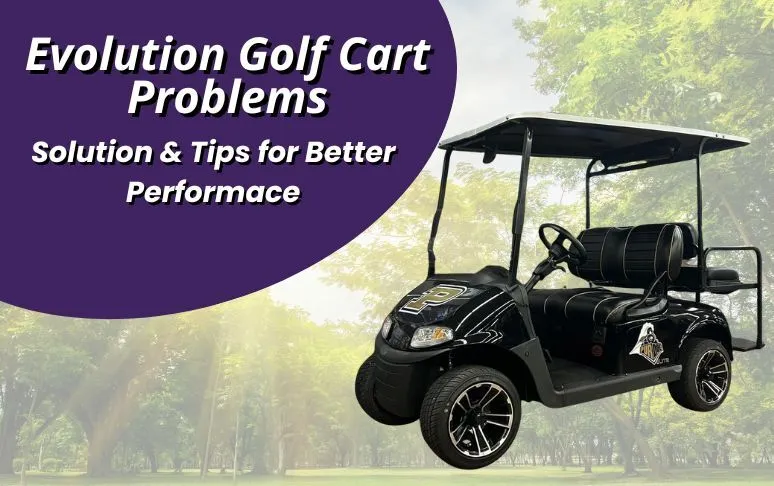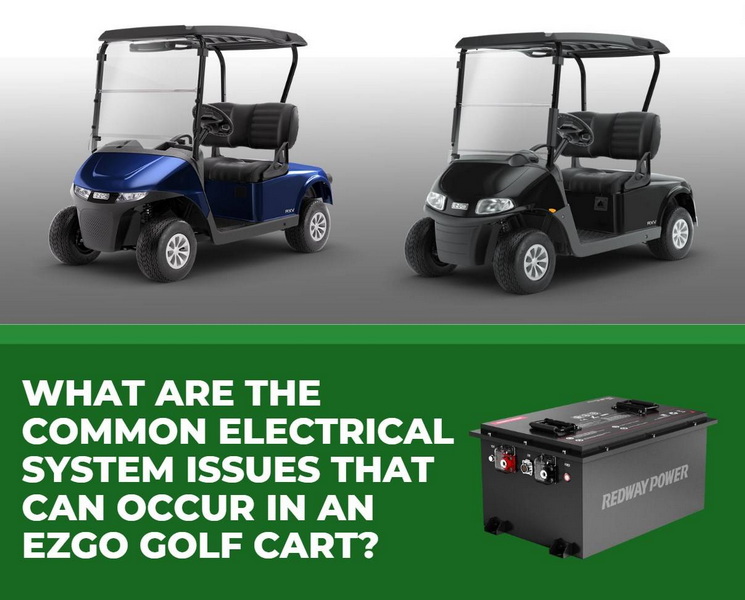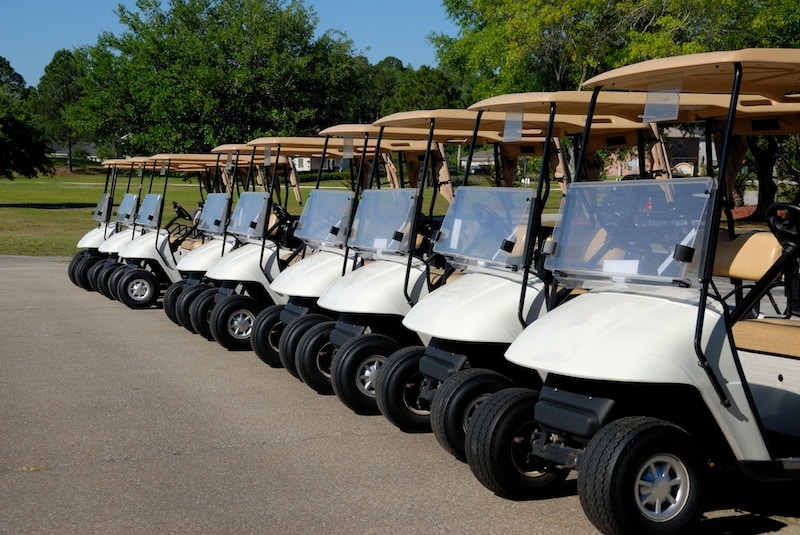Content Menu
● Common Problems with Electric Golf Carts
● Step-by-Step Troubleshooting Guide
>> Check the Battery
>> Inspect Wiring and Connections
>> Examine the Motor
>> Test the Solenoid
>> Speed Controller Inspection
● Additional Troubleshooting Scenarios
>> Cart Moves Slowly or Jerks
>> Cart Makes Strange Noises
>> Overheating Issues
● Maintenance Tips
● Upgrading Your Golf Cart
>> Performance Upgrades
>> Cosmetic Upgrades
● Conclusion
● FAQ
>> 1. What should I do if my electric golf cart won't start?
>> 2. How often should I charge my golf cart's batteries?
>> 3. What causes my golf cart to lose power while driving?
>> 4. Can I replace my golf cart's batteries myself?
>> 5. How do I know if my solenoid is bad?
Electric golf carts are a convenient and environmentally friendly way to navigate golf courses, neighborhoods, and parks. However, like any vehicle, they can encounter problems that may hinder their performance. This guide will provide you with a comprehensive overview of common issues faced by electric golf carts, how to troubleshoot and fix them, and tips for regular maintenance to keep your cart running smoothly.

Common Problems with Electric Golf Carts
Understanding the common problems can help you identify what might be wrong with your electric golf cart. Here are some of the most frequent issues:
- Dead Battery: The most common issue is a dead or weak battery. If your cart won't start or runs slowly, this is the first place to check.
- Motor Issues: Problems with the motor can manifest as sputtering, sluggishness, or complete failure to run.
- Solenoid Failure: The solenoid acts as the main electrical switch for the cart. If it fails, you may hear a clicking sound when trying to start the cart.
- Speed Controller Malfunction: If your cart accelerates erratically or doesn't reach desired speeds, the speed controller may be faulty.
- Corroded Connections: Loose or corroded wiring can disrupt the power flow and cause various performance issues.
Step-by-Step Troubleshooting Guide
Check the Battery
The first step in troubleshooting is to check the battery. Follow these steps:
- Inspect for Corrosion: Look at the battery terminals for any signs of corrosion. Clean them using a mixture of baking soda and water if needed.
- Test Voltage: Use a voltmeter to check the battery voltage. A fully charged battery should read around 12.6 volts or more.
- Water Levels: If your batteries are lead-acid types, ensure that the water levels are adequate. Add distilled water if necessary but do not overfill.
- Load Test: For a more thorough assessment, perform a load test on the batteries using a load tester. This will help determine if they can hold a charge under load conditions.
Inspect Wiring and Connections
Next, examine all wiring and connections:
- Loose Connections: Ensure that all wires are securely connected. Tighten any loose connections you find.
- Check for Damage: Look for frayed or damaged wires that may need replacing.
- Inspect Fuses: Check any fuses in the circuit; if one is blown, replace it with one of the same rating.
Examine the Motor
If the battery and wiring are in good condition, inspect the motor:
- Listen for Noises: Start the cart and listen for unusual noises like grinding or whining which may indicate internal issues.
- Check Motor Brushes: If you're comfortable doing so, remove the motor and check the brushes for wear. Replace them if they are worn down.
- Inspect Motor Connections: Ensure that all connections to the motor are secure and free from corrosion.
Test the Solenoid
To test whether your solenoid is functioning properly:
- Listen for Clicking: When you turn the key, listen for a clicking sound. If you don't hear it, there may be an issue with the solenoid.
- Check Connections: Ensure that all connections to the solenoid are tight and free from corrosion.
- Bypass Test: You can perform a bypass test by connecting two terminals on the solenoid directly; if it engages, then your solenoid may be faulty.
Speed Controller Inspection
If your cart is not accelerating properly:
- Visual Inspection: Check for any visible damage on the speed controller.
- Wiring Check: Inspect all wiring connected to it for any loose connections or corrosion.
- Calibration Reset: Some speed controllers have a reset function; consult your manual to see if this applies to your model.

Additional Troubleshooting Scenarios
Cart Moves Slowly or Jerks
If your electric golf cart moves slowly or jerks during operation:
- Battery Condition: Revisit your battery checks; weak batteries can cause performance issues.
- Controller Issues: A malfunctioning controller could also cause erratic behavior; consider replacing it if other solutions fail.
Cart Makes Strange Noises
Strange noises can indicate various problems:
- Loose Parts: Check for any loose components within the motor housing or undercarriage that might be rattling.
- Bearing Wear: Worn bearings in either the motor or wheels can create grinding noises; inspect and replace as necessary.
Overheating Issues
If your golf cart overheats during operation:
- Cooling System Blockage: Ensure that air vents are clear of debris.
- Motor Inspection: An overheating motor may indicate internal damage; consult a professional if overheating persists after cleaning vents.
Maintenance Tips
Regular maintenance can prevent many issues from arising in your electric golf cart:
- Charge Batteries Regularly:
Always charge your batteries after use to prolong their life.
- Clean Battery Terminals:
Regularly clean terminals to prevent corrosion buildup.
- Inspect Tires and Brakes:
Ensure tires are properly inflated and brakes are functioning correctly.
- Annual Checkups:
Consider having your cart serviced annually by a professional to catch any potential issues early.
- Lubricate Moving Parts:
Regularly lubricate moving parts such as wheel bearings and steering components to ensure smooth operation.
Upgrading Your Golf Cart
If you're looking to enhance your electric golf cart's performance beyond repairs:
Performance Upgrades
Consider upgrading components such as:
- High-Speed Controllers: These can provide better acceleration and top speed.
- Higher Capacity Batteries: Upgrading to lithium-ion batteries can reduce weight and increase range compared to traditional lead-acid batteries.
Cosmetic Upgrades
Enhancing aesthetics can also be fun:
- Custom Seats and Covers: Upgrade seats for comfort and style.
- LED Lighting Kits: Install LED lights for better visibility during night-time use.
Conclusion
Fixing an electric golf cart can often be straightforward if you know where to look. By following this guide, you can troubleshoot common problems effectively and perform basic maintenance to keep your cart in top condition. Remember that while many issues can be resolved at home, some repairs may require professional assistance—don't hesitate to seek help if needed.

FAQ
1. What should I do if my electric golf cart won't start?
Check the battery first; it's often the cause of starting issues. Ensure it is charged and connections are clean and secure.
2. How often should I charge my golf cart's batteries?
You should charge your batteries after every use to maintain optimal performance and longevity.
3. What causes my golf cart to lose power while driving?
This could be due to low battery power, corroded connections, or issues with the motor or speed controller.
4. Can I replace my golf cart's batteries myself?
Yes, if you're comfortable with basic tools and safety precautions, you can replace them yourself; otherwise, consult a professional.
5. How do I know if my solenoid is bad?
If you hear no clicking sound when trying to start your golf cart or if it doesn't engage at all, it may be time to test or replace your solenoid.










































